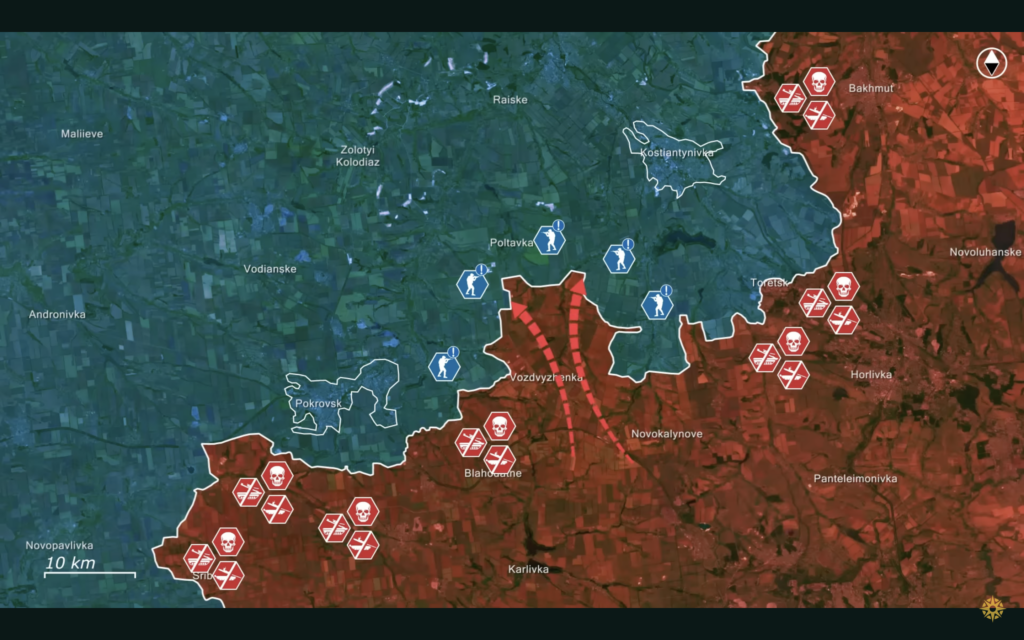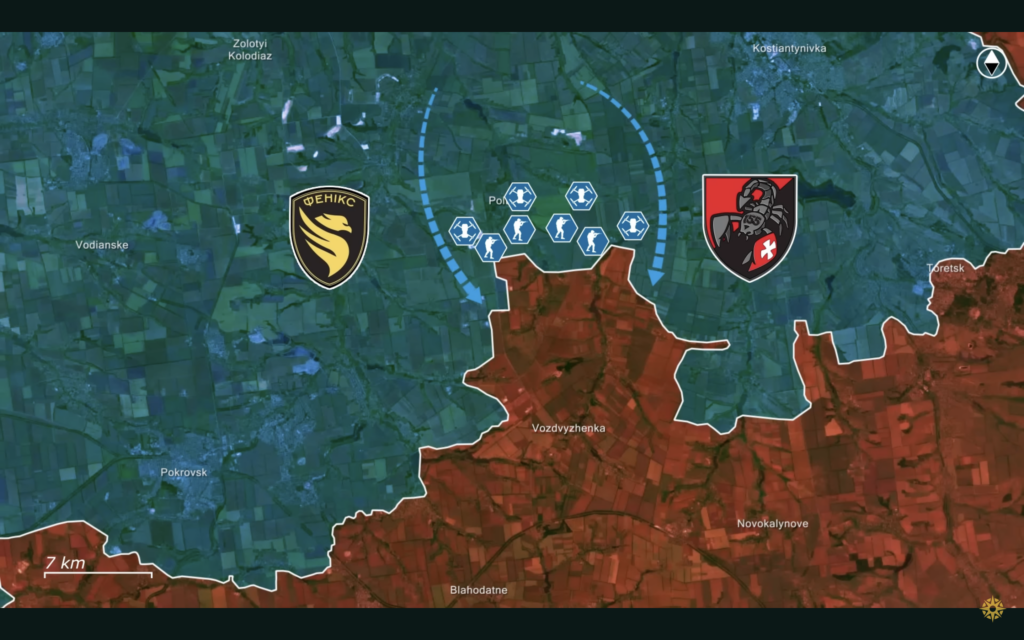Doomed Russian tanks burn near Kostyantynivka — but Ukraine gains only ashes

It’s increasingly rare for Russian regiments to organize a large mechanized attack. Running low on armored vehicles but flush with fresh infantry, the Russians increasingly attack on motorcycles, quad bikes … or on foot.
So it’s worth taking note when and where Russians forces roll out some of their vanishingly rare tanks, infantry fighting vehicles and armored personnel carriers. The targets of the infrequent mechanized assaults are some of the Russians’ main objectives as their wider war on Ukraine grinds into its 40th month.
It should come as no surprise that the town of Kostyantynivka is one of those main objectives. Frustrated in their attempts to directly attack the fortress city of Pokrovsk in eastern Ukraine’s Donetsk Oblast, Russians forces are trying to flank Pokrovsk—by rolling through Kostyantynivka, 40 km to the northeast. They’re willing to risk some of their armored vehicles for the chance to capture Kostyantynivka.
On Wednesday, a substantial Russian force—around a dozen up-armored BMPs and other vehicles—split into two sections and rolled northeast from Novoolenivka, heading for the village of Yablunivka.
They didn’t get very far. The Ukrainian 36th Marine Brigade and 12th Azov Brigade spotted the approaching vehicles—and hit them with drones and potentially other munitions. When the smoke cleared, half or more of the vehicles were on fire.
The Wednesday assault was one of several in the area. All failed. “Russian forces assaulted Ukrainian defense forces positions near Predtechyne, Bila Hora, Oleksandro-Shultyne and Yablunivka,” the Ukrainian Center for Defense Strategies noted. “Ukrainian units prevented any deterioration of tactical positions.”
But “the enemy continues to build up forces for further attacks,” CDS noted. And at least one analyst isn’t optimistic Ukrainian lines will hold. The Russians may be low on armored vehicles, but they’ve got infantry to spare thanks to strong recruiting numbers—driven in part by generous enlistment bonuses.
— imi (m) (@moklasen) June 18, 2025
48.401173, 37.676050 destr. BMP-2 675
48.400666, 37.675930 UA AFV loss
48.415713, 37.67238 destr. BMP-2 675@UAControlMap @GeoConfirmed pic.twitter.com/9OumiDf5tm
Mounting damage
“Things aren’t going well for Ukraine,” wrote Tatarigami, founder of the Ukrainian Frontelligence Insight analysis group.
While the Russian military steadily inducts 30,000 fresh infantry every month—more than enough to replace permanent losses to Ukrainian action and establish a few new units, the Ukrainian military is still struggling to recruit the 80,000 new infantry it needs to fully staff existing brigades. “With current resources, Ukraine can’t win,” Tatarigami claimed.
“Russians will likely take Pokrovsk and Kostyantynivka, and Kupiansk is also at risk,” Tatarigami added, without saying when the Russians might take those cities and towns.
But a Russian advance through and around Pokrovsk wouldn’t necessarily signal catastrophic defeat for Ukraine—nor decisive victory for Russia. “The most optimistic anticipated outcome here is where both sides lose,” Tatarigami explained.
“Russia’s realistic goal … may no longer be outright occupation,” Tatargami added, “but rather rendering Ukraine unviable as a functioning state—undermining its economy, depopulating its cities and precipitating long-term sociopolitical collapse.”
But “the Russian state itself suffers economic and demographic decline,” Tatarigami pointed out. In 40 months, more than a million Russians have been killed or wounded. War spending now accounts for 40% of the Kremlin’s budget. “Even a ‘successful’ outcome in Ukraine could leave Russia so depleted that it enters its own period of internal instability and geopolitical marginalization.”
“If Ukraine manages to repel Russian advances, why wouldn’t that constitute a victory? Because, as noted, winning a war is not only about holding ground—it’s about what remains afterward.”
Half a million Ukrainians have been killed or wounded. Entire cities are in ruin. “A country left with ruined infrastructure, lost territories, millions of its citizens displaced and a dramatically aged population with a GDP per capita over twice smaller than Mexico cannot claim a strategic win.”
It’s better for Ukrainian forces to repulse a Russian mechanized attack than to not repulse a Russian mechanized attack. But that’s fleeting good news in a war that’s catastrophic for both sides. “If you think this has a happy ending,” Tatarigami concluded, “you haven’t been paying attention.”





